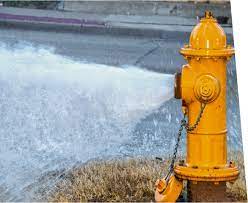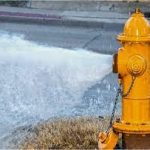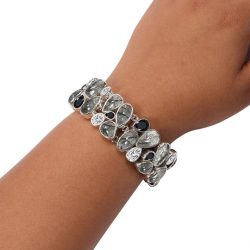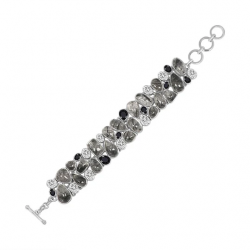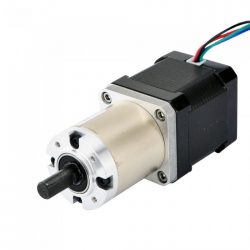Understanding the Components of a Fire Hose Reel System
When it comes to fire safety, having the right equipment in place is crucial. One such important piece of fire safety equipment is the fire hose reel system. This system plays a vital role in controlling and extinguishing fires in various settings. Let’s delve into the critical components of a fire hose reel system to understand better how it works.
The Heart of the System: The Fire Hose Reel
At the core of the fire hose reel system lies the fire hose reel itself. This is the tool that provides firefighters and building occupants with the means to deliver pressurized water to the heart of a fire. The fire hose reel is typically mounted on a sturdy bracket, allowing it to be easily accessed in emergency situations. It’s usually located along escape routes, near exits, or in areas that are prone to fire risks.
The reel, usually made of durable materials such as metal or tough polymers, houses a fire hose that can vary in length but is typically around 30 meters. This length enables firefighters to maintain a safe distance from the flames while directing a powerful stream of water towards the fire source.
Water Supply and Inlet Valve
Behind the scenes, the fire hose reel system relies on a robust water supply to function effectively. This water supply is usually connected to the building’s main water source, which is typically the same source used for general plumbing needs. The water source is essential for ensuring a continuous flow of water to the hose reel, enabling firefighters to fight the fire for an extended period without interruption.
To control the flow of water and maintain the required pressure, an inlet valve is strategically placed in the system. This valve regulates the water supply to the hose reel, allowing firefighters to adjust the water pressure based on the nature and intensity of the fire. This feature is crucial to prevent wastage of water and to provide optimal control over the firefighting efforts.
Nozzle: Precision and Power
One of the most critical components of the fire hose reel system is the nozzle attached to the end of the hose. This seemingly simple device plays a pivotal role in determining the effectiveness of firefighting efforts. The nozzle allows firefighters to control the shape and intensity of the water stream, enabling them to adapt to various fire scenarios.
Nozzles are designed with different settings, ranging from a narrow jet stream for precision targeting of flames to a wider spray for covering a larger area with a mist of water. Firefighters can adjust the nozzle’s settings to optimize their approach based on the size, location, and type of fire they are dealing with.
Hose Guide and Swinging Arm
Ensuring smooth and efficient operation is the hose guide and swinging arm mechanism. The hose guide is a clever invention that prevents the hose from tangling or kinking as it is pulled from the reel during deployment. This feature is essential as kinks or tangles could impede the water flow or create hazards for firefighters.
The swinging arm, on the other hand, serves as a support structure for the fire hose reel. It allows the reel to pivot freely, ensuring that the hose can be easily unwound and retracted. This flexibility is invaluable during emergencies when every second counts. The swinging arm also provides a degree of protection for the hose, shielding it from damage that could occur in high-traffic areas or during accidental impacts.
Signage and Training
Beyond the physical components, effective use of the fire hose reel system relies on clear signage and proper training. Signage plays a crucial role in guiding occupants and firefighters to the location of the fire hose reel. In the chaos of an emergency, clearly marked signs can mean the difference between a swift response and confusion.
Moreover, training is paramount. Building occupants and designated firefighters must be well-versed in the operation of the fire hose reel system. This includes understanding how to properly deploy the hose, adjust the nozzle, and effectively fight fires while prioritizing safety. Regular training drills can instill the necessary skills and confidence to respond swiftly and effectively in high-stress situations.
1. Hose Reel Drum
At the heart of the fire hose reel system is the hose reel drum. This cylindrical device is where the fire hose is neatly coiled and stored when not in use. The drum allows for quick deployment of the hose during emergencies, making it an essential component of the system.
2. Fire Hose
The fire hose itself is a highly durable and flexible tube designed to carry pressurized water from a water source to the fire. Modern fire hoses are often constructed from materials like rubber or woven synthetic fibers, ensuring they can withstand high pressures and intense heat.
3. Nozzle
The nozzle is the business end of the fire hose reel system. It’s the point where the water is released to combat the fire. Nozzles come in various types, including adjustable, fog, and jet nozzles. Firefighters can choose the nozzle type based on the type and intensity of the fire they’re dealing with.
4. Valve Assembly
The valve assembly serves as the control center of the fire hose reel system. It’s usually located near the hose reel and is responsible for regulating the flow of water. This component allows firefighters to start or stop the water flow as needed, providing them with better control over the firefighting process.
5. Mounting Bracket
To ensure easy accessibility and protection, fire hose reel systems are equipped with a mounting bracket. This bracket securely holds the hose reel and ensures it’s positioned at a convenient height for quick access during emergencies. Proper placement of the mounting bracket is crucial for maximizing the system’s effectiveness.
6. Water Supply Connection
For a fire hose reel system to function, it needs a water supply connection. This connection allows the system to draw water from a reliable source. It’s important to ensure that the water supply is consistent and that the connection is well-maintained to guarantee the system’s readiness at all times.
7. Hose Guide
A hose guide is a small but important component that helps prevent kinks and tangles in the fire hose when it’s being deployed. It ensures that the hose unreels smoothly and quickly, saving valuable time during a fire emergency.
8. Signage and Instructions
Clear and easily understandable signage and instructions are essential aspects of any fire safety equipment, including the hose reel system. These visual cues guide users on how to operate the system effectively, even in high-stress situations.
9. Maintenance and Inspection Tags
Regular maintenance and inspections are crucial to keep the fire hose reel system in optimal working condition. Maintenance and inspection tags are often attached to the system, providing a record of when the system was last checked and serviced. This documentation ensures that the system is always ready for action.
10. Training and Education
Understanding how to properly operate a fire hose reel system is essential. Training and education play a significant role in ensuring that individuals know how to use the system effectively and safely. Workshops and drills can help users become familiar with the components and operation of the system.
Conclusion
In this article, we’ve explored the fundamental components of a fire hose reel system, shedding light on their significance in fire safety. These components work together to create a well-functioning system that enables firefighters and trained personnel to respond promptly and effectively to fire emergencies.
Understanding the roles of each component, from the hose reel drum where the hose is stored to the nozzle that directs the water, is crucial for ensuring the proper use and maintenance of the system. The valve assembly provides control, the mounting bracket ensures accessibility, and the water supply connection guarantees a steady flow of water.
